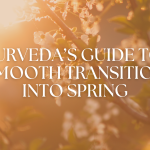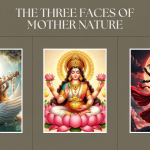Introduction:
The heart, the central ticker of the human, is the most essential organ that allows life to inhabit the human body. For this reason, it’s the organ that gets most press and most attention with regards to research and treatment. And still the incidence of heart disease has only gone up in the past four decades since the Framingham studies that framed “Cholesterol” as the real problem and cause of heart disease. We have seen this rise because we have focused our attention on the wrong enemy. This series will address these controversies and offer real, natural alternatives for treatment for heart health.
For a long time, the physical function of the heart was thought to be limited to pumping blood through our blood vessels… This function ensures that every cell of the body get oxygen and nutrition; as well as, provides opportunity to get rid of waste and toxins from the cellular environment. In recent years, we have also learned much about the role of the heart in nervous system activity. Additionally, the heart is also considered to have emotional and spiritual functions. These cannot be understood through physiology; rather, a study of our language helps us to get a sense of these functions. The root of the word ‘courage’ is derived from the latin word for the heart, which is ‘cor’. Thus, the etimology of the word courage is to have “strength of heart” or “abundance of heart”. In our culture, we see the use of the phrases like “he or she has got heart” or we may hear “it takes heart” to get something done; this is describing the courageous quality of achieving something extraordinary. The heart is often recognized as central to our emotional experiences of love, generosity, compassion, and sympathy.
We may have known the blessing of “living in someone’s heart”, the generosity of someone’s “kind heart”, the healing power of a “compassionate heart”, or the ease of living with an “open heart” (whenever that is possible). All of these experiences speak to the emotional and spiritual experiences of humans throughout history. This is the mythical way our ancestors viewed the heart and its power in our lives. These emotional and spiritual experiences affect our health just as profoundly as the physical ailments that afflict the heart.
The function of the Heart:
Ayurveda describes the physical, energetic and spiritual functions of the heart… At a physical level, we find a perspective that is very congruent with modern understanding of the cardiovascular system… Heart and the blood vessels are the conduction system for blood, plasma, nutrition and oxygen to all parts of the body. Blood also carries messenger molecules like hormones, immune activating or inflammatory cytokine signals, and more. Getting nourishment to every part of the body, as well as organizing and synchronizing body’s functions is essential activity of the heart and the circulatory system.
The heart chakra sits at the center of the seven chakras. The heart chakra, called the Anahat Chakra in Sanskrit, is described as the seat of the Self, the seat of the Soul. It holds the emotional functions of love, confidence, trust, as well as deep connection and compassion for other people, animals, and the environment. When the heart chakra is out of balance, individuals experience vulnerability, loss of confidence, anxiety, emotional distress, and dependency. The Anahat chakra offers the cure for these ailments in the form of self-love and unconditional love as its highest function.
In Ayurveda, we also learn that heart is an integral part of the function of the mind and mental activity. Especially, the inward and outward effect of emotions. Studies of the Heart-Math Research Institute have demonstrated that “that communication between the heart and brain actually is a dynamic, ongoing, two-way dialogue, with each organ continuously influencing the other’s function. Research has shown that the heart communicates to the brain in four major ways: neurologically (through the transmission of nerve impulses), biochemically (via hormones and neurotransmitters), biophysically (through pressure waves) and energetically (through electromagnetic field interactions).” (1, Page: 3) What is most fascinating to me is that heart has its own nervous system that functions “independently of the cranial brain to learn, remember, make decisions and even feel and sense.” (1, Page: 5) The heart produces stimulating neurotransmitters like acetylecholine and dopamine, adrenaline hormones epinephrine and norepinephrine, and also the hormone oxytocin that support the function of emotional connection and bonding. Oxytocin influences brain activity “involved in cognition, tolerance, trust and friendship and the establishment of enduring pair-bonds.”(1, Pg: 7)
Heart-math studies have pointed out that emotional experiences have direct effect on heart rate variability. Where incoherence of the heart rhythms is caused by negative emotions, fear, anger, as well as emotional or physical stress and trauma. On the other hand, positive emotions, love, connection, compassion, emotional maturity and resilience, cause increase coherence of the heart rhythms. With the resulting hormonal and neurological effects, the heart can negatively or positive affect overall health. (1, chapter 4) For example, exposure to a stressful situation can bring up memories of the past or sub-concisous fear, that convert into physiological reactions of the mind and adrenal system… this reaction is mediated by the variation of heart rhythm and hormone produced by the heart. Along with this central and profound automatic activity of the heart, the body has also evolved powerful ways to achieving control and coherence of the cardiovascular and nervous system. Central to this self-control is the activity of the breath and feedback it provides to the heart and the nervous system. We will be looking at these closely in upcoming discussions.
The Problem of Heart Disease:
Are you still wondering why we are talking about all this? Here’s the reason, the term “heart disease” represents several health conditions that affect the blood vessels and heart. The most common type is coronary heart disease2, followed by stroke, heart failure, high blood pressure, and disease of the arteries (blood vessels). Heart disease is the leading cause of death in the United States; accounting for an average of 600,000 deaths per year in US, that is 1 of 4 deaths every year.(3) Every year, 700,000 people suffer heart attack, of which 515,000 are having a heart attack for the first time.(4) Billions of dollars-worth of Statin drugs are prescribed to lower our cholesterol and still, there is no impact.
It is true that statin drugs can lower cholesterol levels, but there is little proof that they are effective in preventing heart disease. Here are three of the major studies and the results:
| Study Name | Type/Patients | Results |
| PROSPER Study (5) | Randomized controlled Study with 5,804 patients | Statin did not reduce total heart attacks and total strokes in primary prevention group. |
| ALLHAT-LLT study(6) | Randomized controlled Study with 10,355 patients | Statin did not reduce total heart attacks and strokes; also, it did not reduce rate of deaths in patients. |
| ASCOT-LLA study(7) | Randomized controlled Study with 10,305 patients | Statin did not reduce total heart attacks and strokes compared to placebo. |
A review of all the major studies accounted for more than 65,000 patients using statin drugs for primary prevention.8 Combined data of 11 randomized control trials showed that statins did not reduce the rate of deaths compared placebo. Additionally, there was no relationship between reduction of LDL-cholesterol (so called “bad” cholesterol) and the rate of death among patients. To conclude, the reduction of LDL cholesterol does not protect individuals from heart attacks; in other words, fats are not the enemy.
This is just one example how we have dug in a bigger hole in our approach to treatment. There are many natural ways to restore health. This is a solutions-based discussion, though we sometimes go down the rabbit holes of problems and their descriptions, the ultimate goal is to offer creative solutions.
In upcoming parts, we will discuss the physical, emotional, and spiritual modes of healing the heart. Today, I will leave you with this meditation… Take a moment to be still… sit or stand or lay down… straighten your spine and take a deep breath into the abdomen… inhaling, your mind becomes present… exhaling, releasing the tension… and again, in-spirit-ion… and ex-spirit-ion, letting go… bring your attention to the heart as you breathe… you can put your hand on your heart to get even closer… breathing deep into the abdomen with attention to the heart… feel it soften with each breath… … … … Continues for 3-5mins or as long as you wish.
References:
1) Dr. MaCraty, Rollins. “The Science of the Heart.” Volume. 2, Heart Math Institute, 2015; Boulder Creek, CA.
2) Go AS, et al. Prevalence of cardiovascular disease in adults ≥20 years of age by age and sex (NHANES: 2007–2010). American Heart Association, Circulation Journal, 2013.
3) Murphy SL, Xu JQ, Kochanek KD. Deaths: Final data for 2010. Natl Vital Stat Rep. 2013;61(4). <http://www.cdc.gov/nchs/data/nvsr/nvsr61/nvsr61_04.pdf>
4) Go AS, Mozaffarian D, Roger VL, Benjamin EJ, Berry JD, Blaha MJ, et al. Heart disease and stroke statistics—2014 update: a report from the American Heart Association. Circulation. 2014; Vol. 128.
5) Shepherd J, et al. PROSPER study group. Pravastatin in elderly individuals at risk of vascular disease (PROSPER): a randomized controlled trial. Lancet, 2002; Vol. 360, Pg. 1623-1630.
6) The ALLHAT Officers and Coordinators for the ALLHAT Collaborative Research Group. Major Outcomes in moderately hypercholesterolemic, hypertensive patients randomized to pravastatin vs usual care: The Antihypertensive and Lipid-Lowering Treatment to Prevent Heart Attack Trial (ALLHAT-LLT). JAMA 2002; Vol. 288, Pg. 2998-3007.
7) Sever PS, et al. ASCOT investigators. Prevention of coronary and stroke events with atorvastatin in hypertensive patients who have average or lower-than-average cholesterol concentrations, in the Anglo-Scandinavian Cardiac Outcomes Trial—Lipid Lowering Arm (ASCOT-LLA): a multicentre randomized controlled trial. Lancet 2003; Vol. 361, Pg. 1149-1158.
8) Ray KK, et al. Statins and All-Cause Mortality in High-Risk Primary Prevention: A Meta-analysis of 11 Randomized Controlled Trials Involving 65229 Participants. Arch Intern Med. 2010; Vol. 170(12), Pg. 1024-1031.
Now is the time to free the heart,
Let all intentions and worries stop,
Free the joy inside the self,
Awaken to the wonder of your life.
Open your eyes and see the friends,
Whose hearts recognize your face as kin,
Those whose kindness watchful and near,
Encourages you to live everything here.
See the gifts the years have given,
Things your effort could never earn,
The health to enjoy who you want to be
And the mind to mirror mystery.
A Blessing For Celebrations ~ John O’Donohue
A Culture of Wellbeing Podcast
Now Streaming on your favorite Podcast Hub:
Spotify: Click Here!
Apple Podcast: Click Here!
Amazon Music: Click Here!
Google Podcast: Click Here!
Connect with Dr. Anup:




